Subfamily Pseudocrenilabrinae Phylum Chordata Rank Species | Tribe Cyprichromini Scientific name Cyprichromis leptosoma Higher classification Cyprichromis Order Perciformes | |
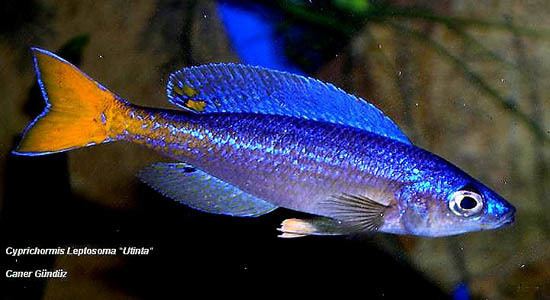 | ||
Similar Cyprichromis, Cichlid, Altolamprologus, Neolamprologus, Altolamprologus calvus | ||
Territorial cyprichromis leptosoma blue flash mpulungu males pisces
Cyprichromis leptosoma is a mouthbrooding species of fish in the Cichlidae family. It is endemic to Zambia where its natural habitat is the southern end of Lake Tanganyika. It seems quite common within its range and faces no particular threats, so the International Union for Conservation of Nature has assessed its conservation status as being of least concern.
Contents
- Territorial cyprichromis leptosoma blue flash mpulungu males pisces
- Wild caught cyprichromis leptosoma kigoma spitting fry
- Description
- Ecology
- In the Aquarium
- References
Wild caught cyprichromis leptosoma kigoma spitting fry
Description
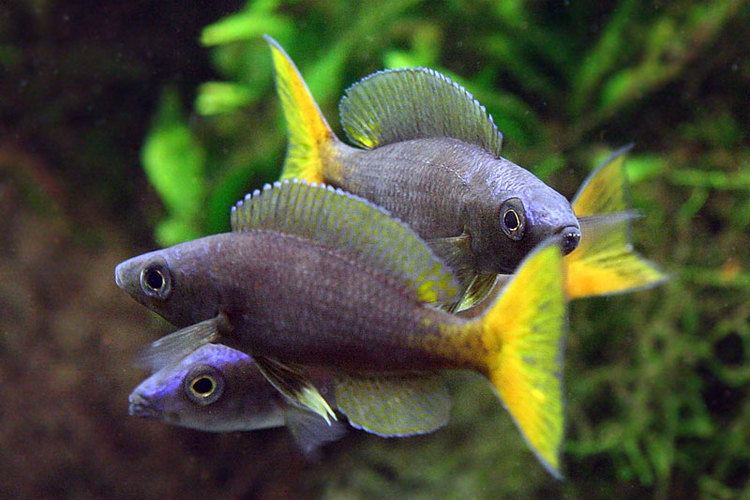
It is a streamlined fish with a body color that is silvery to blue. It grows to about 3 inches or 8 centimeters in length. The males have either yellow or blue tails. The mouth is protrusable and forms a suction tube which is used for sucking in pelagic zooplankton.
Ecology
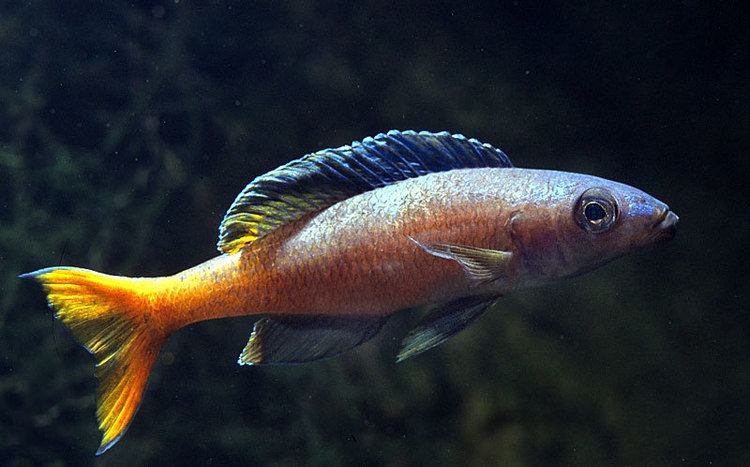
C. leptosoma, like other fish in its genus, has an unusual breeding strategy. Males form a three-dimensional lek in mid-water. Females decide which males they want to mate with. If a female chooses to mate with a particular male, they will release an egg, which the male fertilizes in mid-water. The female catches the egg in her mouth without the egg hitting the ground. The female protects and broods the eggs in its mouth until the fry hatch and are able to swim on their own. This takes about three weeks. At that point the female releases the eggs into a rocky area for the fry's protection, and leaves them there on their own.

C. leptosoma is a schooling species that lives in deep water. It is subject to several predators within Lake Tanganyika. The most prominent is Cyphotilapia frontosa, which lives in deep water most of the time, but comes up to feed on C. leptosoma primarily at dawn.
In the Aquarium
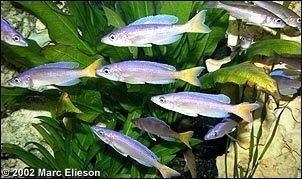
Due to its vivid color, small size and relative hardiness, C. leptosoma is a reasonably popular fish for home aquariums. There are several color varieties, the most popular of which is called "blue flash". Cyps, as they are sometimes referred to in the aquarium hobby, are more sensitive to water conditions than some more popular Lake Tanganyikan aquarium cichlids, such as many Lamprologus, Neolamprologus, Julidochromis and Altolamprologus species. But they are more tolerant than many other Lake Tanganyikan mouthbrooders, such as Tropheus, Petrochromis and Eretmodus. They are also less particular about their diet than many other mouthbrooders.
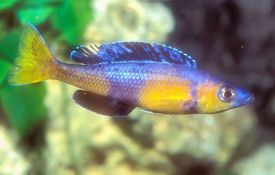
They do require space in an aquarium. It is generally suggested that at least a 55 gallon tank be used to house a group of 6 cyps. Within a group, breeding will likely occur naturally if males and females are both present. The female's mouth becomes very distended after holding the eggs/fry for a couple of weeks. If the female does not release the fry after about three weeks it may be necessary to remove the eggs from her mouth manually (a process called "stripping" the fry).
